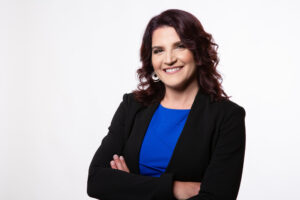The full study can be found here
Tell us more about yourself and the author team
Dr Stephanie Greenspan is an Adjunct Associate Professor of Physical Therapy at Samuel Merritt University in Oakland, CA, USA. She started her own company Artletic Science to enhance the health and performance of artist athletes through research, education, and physical therapy. Her performing arts background was as an aerialist, dancer, and aerial coach.
Dr Melanie Stuckey is a research associate in human performance and social innovation at Centre for Circus Arts Research, Innovation and Knowledge Transfer (CRITAC) in Montréal, Canada. She is also a pole artist and coach.


What is the story behind your study?
Dr Greenspan was called upon to provide injury prevention workshops to different circus groups as a physical therapist and aerial coach. In looking at what was available in the research she learned that very little was known about injuries in the circus and even less about how to prevent them. She especially wanted to understand how injury patterns differed between circus disciplines with the ultimate goal of developing strategies to decrease injury risks specific to different circus arts. She started with a small pilot study at a single training facility and quickly realized she needed a much broader population to answer her research questions. So, she applied for a grant from her university to enrol over 200 circus artists from different training facilities in the United States.
In your own words, what did you find?
The circus arts have a broad range of disciplines, some with very different physical demands. Still, we don’t yet understand how injury patterns vary based on the specific discipline. This study found that injury rates were higher in aerial disciplines, such as trapeze and silks, than in ground acrobatics, such as tumbling and hand balancing.
Across the different subgroups by professional status, sex at birth and age, shoulder injuries were the most prevalent, ranging from 21-26% of the injuries in these subgroups. Lumbar and elbow injuries were the next most common for the entire cohort, but this wasn’t as consistent across subgroups. More than half of all injuries were to muscle or tendon structures.
Despite serious traumatic injuries making the headlines, in this study, traumatic injuries were less common than repetitive use injuries, which comprised 66% of all injuries. Only one head injury happened in the entire cohort, and only 42% injury resulted in time loss from participation in a circus discipline.
What was the main challenge you faced in your study?
There were two main challenges in the study. One was keeping participants engaged for an entire year, especially when they had to submit a weekly log detailing their training and report on injuries. Dr Greenspan sent an email every Monday morning from September 2018 to January 2021 as a reminder and tried adding something educational or entertaining to encourage people to read the email. Our dedicated study coordinator, Sarah Tiffin, also reached out by email, text, and phone to encourage people when needed to catch up on training logs so that we wouldn’t lose them in the study.
The second challenge was the pandemic. We had the second cohort of 146 participants enrolled at that time. All the participating circus training facilities were closed for a period. Training changed for many participants, and performances were cancelled for all. We had to convert to performing our injury evaluations in telehealth rather than in-person. Filling out training logs was sometimes a painful reminder of how Covid disrupted circus artists’ lives. Some artists completely stopped training others found new disciplines that they could train at home. Despite the Covid-related challenges we had 77% of our participants complete a full year in the study.
If there is one take-home message from your study, what would that be?
Circus arts include high physical demand, a performing arts context, and a constantly growing list of disciplines, making studying this complex. It is important for circus professionals to better understand factors in injury risk so better strategies for risk mitigation can be employed. Both intrinsic factors of the individual and extrinsic factors in their environment must be considered to optimize health and performance in circus artists.
More injury research is needed across circus populations to better understand injury patterns. The methodology should be consistent with the recently published circus-specific extension framework of the International Olympic Committee 2020 to compare and compile findings.